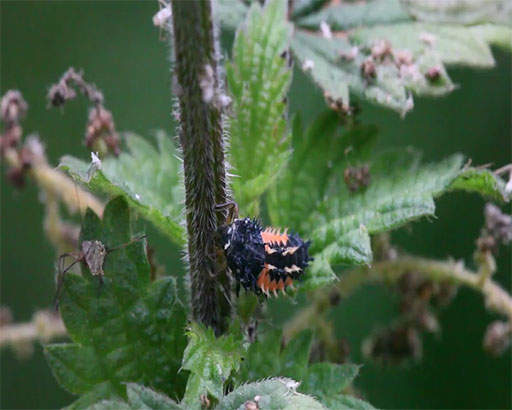2 Further research post-identification of the stinging nettle
One weekend, while walking beside a stream in my local park, I came across a ladybird larva feeding on a quite hairy plant, as shown in the video:

Transcript: Video 1
On closer inspection I noticed that the plant had serrated leaves, was of medium height (50 cm) and, to my surprise, had a sharp sting. I was keen to find out what it was and, after taking a picture and searching for similar plants on iSpot, I was able to ascertain it was Urtica dioica, commonly known in England as the stinging nettle. I followed this up with a search of other credible external repositories of both local and international significance.
I then followed this up with a search of other credible external repositories of both local and international significance. I was interested to know if there were reports of any interactions of interest with this plant, which is known for its stinging effect on skin. I also wondered if it had any practical uses and whether it was known outside the UK.
